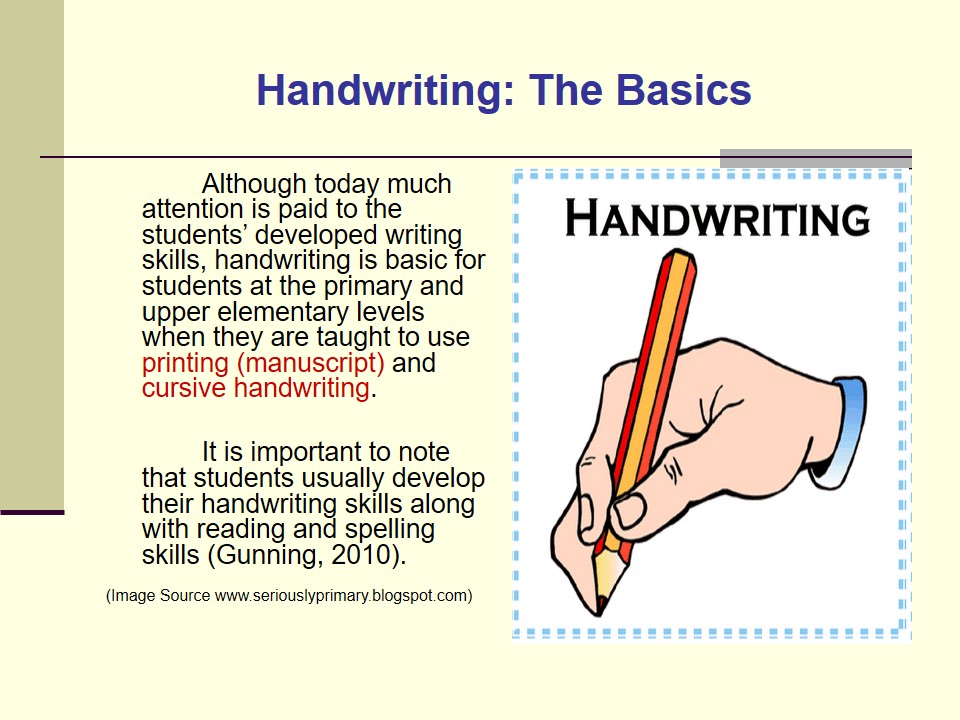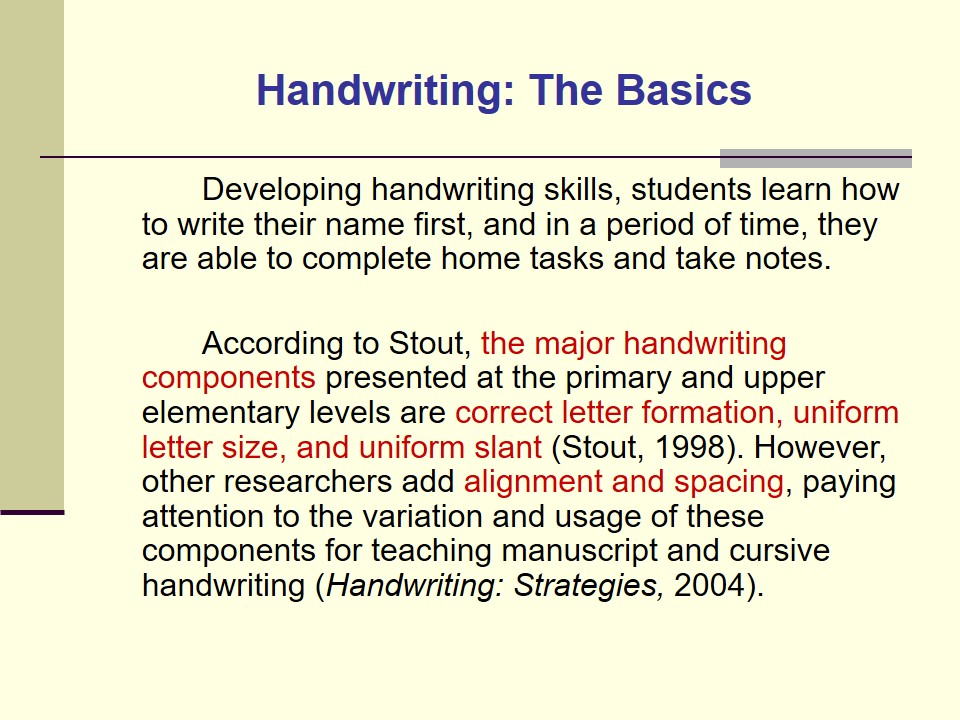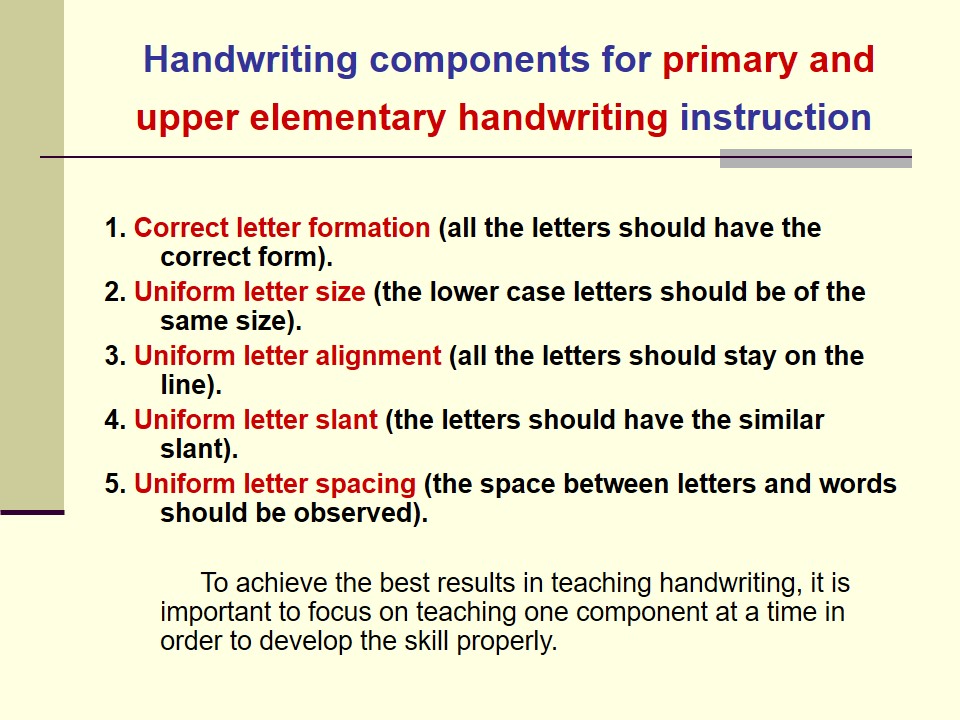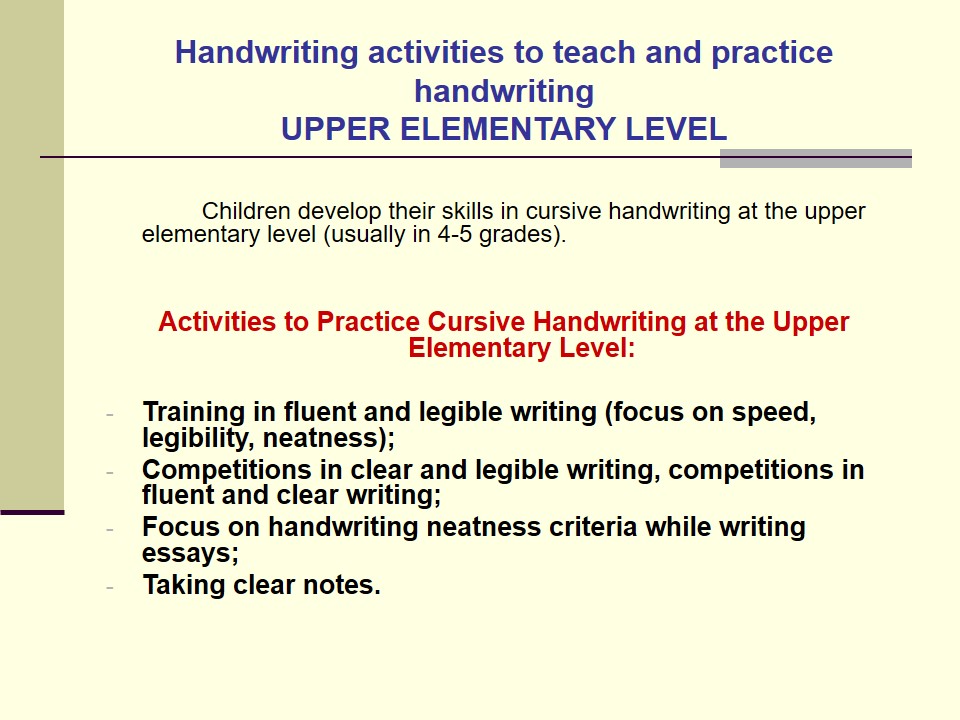Handwriting: The Basics
Although today much attention is paid to the students’ developed writing skills, handwriting is basic for students at the primary and upper elementary levels when they are taught to use printing (manuscript) and cursive handwriting.
It is important to note that students usually develop their handwriting skills along with reading and spelling skills (Gunning, 2010).
Developing handwriting skills, students learn how to write their name first, and in a period of time, they are able to complete home tasks and take notes.
According to Stout, the major handwriting components presented at the primary and upper elementary levels are correct letter formation, uniform letter size, and uniform slant (Stout, 1998). However, other researchers add alignment and spacing, paying attention to the variation and usage of these components for teaching manuscript and cursive handwriting (Handwriting: Strategies, 2004).


Handwriting components for primary and upper elementary handwriting instruction
- Correct letter formation (all the letters should have the correct form).
- Uniform letter size (the lower case letters should be of the same size).
- Uniform letter alignment (all the letters should stay on the line).
- Uniform letter slant (the letters should have the similar slant).
- Uniform letter spacing (the space between letters and words should be observed).
To achieve the best results in teaching handwriting, it is important to focus on teaching one component at a time in order to develop the skill properly.

Handwriting activities to teach and practice handwriting
Primary Elementary Level
At the primary elementary level children are taught to print letters (manuscript handwriting) in kindergarten or first grade and to use cursive handwriting in the second or third grade.
- Activities to Teach Manuscript Handwriting:
- Training in writing horizontal lines, vertical lines, slides, and circles; finger tracing exercises;
- Copying letters basing on visual patterns and oral instructions;
- Writing imaginary letters in the air (the development of motor skills);
- Making the shapes of different letters with bodies (kinesthetic channel of learning);
- Tracing, tracking, and practicing multiple patterns basing on the visual demonstration and tactile activities.
It is necessary to focus on the posture, pencil grip, and paper placement.
Cursive handwriting is usually presented in the late second or third grade. It is important to make the transition from print to cursive handwriting easier for children (Koenke, 1986).
It is important to coordinate the work of right handers and left handers with references to the appropriate and clear instructions.
- Activities to Teach Cursive Handwriting:
- Comparison and discussion of print and cursive letters;
- Training in connecting letters with the help of cursive lines;
- Writing imaginary letters in the air;
- Writing letters and words basing on the demonstration and oral instructions;
- Copying letters and words basing on the visual patterns;
- Monitored and independent writing in worksheets.


Upper Elementary Level
Children develop their skills in cursive handwriting at the upper elementary level (usually in 4-5 grades).
- Activities to Practice Cursive Handwriting at the Upper Elementary Level:
- Training in fluent and legible writing (focus on speed, legibility, neatness);
- Competitions in clear and legible writing, competitions in fluent and clear writing;
- Focus on handwriting neatness criteria while writing essays;
- Taking clear notes.

References
English: Word Level: Handwriting. (2013). Web.
Gunning, T. (2010). Creating literacy instruction for all students. Boston, MA: Allyn and Bacon/Pearson Education.
Handwriting: Strategies. (2004). Web.
Koenke, K. (1986). Handwriting instruction: What do we know? ERIC Digest. Web.
Stout, K. (1998). How to teach handwriting. Web.
Teaching ideas: Handwriting. (2012). Web.